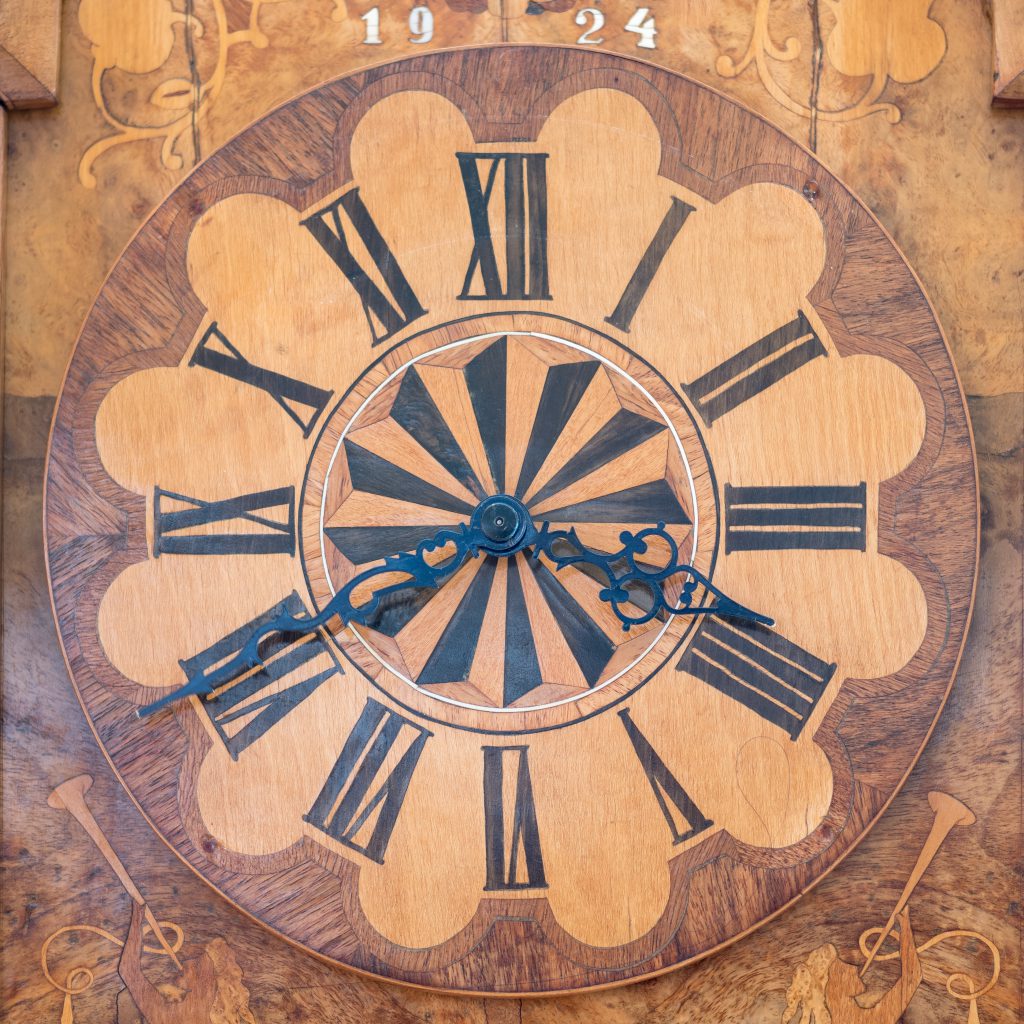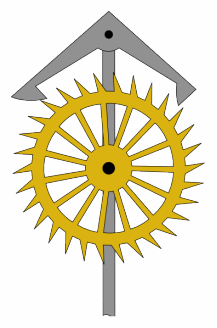
My son once asked “how does it work?” He wanted to know where the batteries were. Similarly, my son-in-law was unfamiliar with how a mechanical clock worked. This points to things that are lost as technology progresses, as we abstract our lives away from a physical-mechanical world to a virtual-electronic world. It is easy to discount these older technologies, yet their role in the development of our way of life, our society, is unmistakable. Wikipedia notes: “Throughout the 18th and 19th centuries, pendulum clocks in homes, factories, offices, and railroad stations served as primary time standards for scheduling daily life, work shifts, and public transportation. Their greater accuracy allowed for the faster pace of life which was necessary for the Industrial Revolution.” Just think about that for a while.
My grandmother bought the clock for my grandfather’s 30th birthday. Made in Germany in 1924, it has travelled from Sonneberg, where they lived at the time, to Toronto, where they moved to in 1929. My father inherited the clock and moved it to Calgary in the late 1980s, where he was living. When my father passed away in 2017, I inherited the clock and moved it back to Toronto, where it now stands in our hallway. I am now the third grandfather to own it.
A pendulum grandfather clock is a type of timekeeping device that relies on the regular, periodic motion of a pendulum to maintain accurate time.
Basic Components
- Pendulum: A rod with a weight at the end, suspended from a pivot point.
- Weights: A set of two weights on chains. The one on the left is to “power” the chimes, while the one on the right “powers” the clock.
- Clock Face: Displays the time, with both hour and minute hands.
- Gears and Escapement: Mechanical elements that control the release of energy from the weights and translate it into timekeeping.
Functioning
- Initial Setup: To set up the clock, the weights are pulled up, storing gravitational potential energy. The pendulum is then manually moved to start swinging.
- Swinging Pendulum: The pendulum swings back and forth in a regular, periodic motion. The time it takes to complete one swing is one second, and only changes slightly due to factors like air resistance and temperature.
- Escapement Mechanism: The escapement is a device that controls the release of the potential energy stored in the weights. When the pendulum swings, it allows the escapement gear to advance by a small, fixed amount. This is what creates the “tick-tock” sound. In doing this release, the weights drop a fraction of an inch, pulled by gravity, which is the energy release that powers the clock.
- Gears and Hands: The motion of the escapement gear is transferred through a series of other gears, which control the movement of the clock hands on the face of the clock.
- Descending Weights: As time passes, the weights descend, gradually releasing the stored gravitational energy that keep the pendulum swinging and the gears moving.
- Winding: Eventually, the weights will descend to their lowest point, and the clock will need to be wound again. This is done by pulling the weights back up to their original positions. It is important to lift the weights while pulling to avoid undue stress on the internal mechanics of the clock.
- Calibration: External factors such as temperature and humidity changes affect the clock’s accuracy. While the length of the pendulum rod can be adjusted to fine-tune the clock, I manually adjust the clock each day, as the amount of time lost or gained depends on the season, which is reflective of the ambient humidity and temperature.

By Chetvorno – Own work, CC0, https://commons.wikimedia.org/w/index.php?curid=33176691
The escapement mechanism a key component controlling the release of power to move the clock. It typically consists of a gear with teeth and an anchor-shaped piece with two pallets (small protruding pieces). When the pendulum swings in one direction, one of the pallets catches a tooth on the gear, stopping it momentarily. As the pendulum swings back in the other direction, the pallet releases the tooth, allowing the gear to advance by one tooth. The other pallet then catches the next tooth, again momentarily stopping the gear.
This back-and-forth interaction between the escapement gear and the pendulum regulates the release of energy from the clock’s weights. Each “tick-tock” corresponds to the escapement gear advancing by one or two teeth, ensuring that the clock keeps time at a steady rate.
Leave a Reply